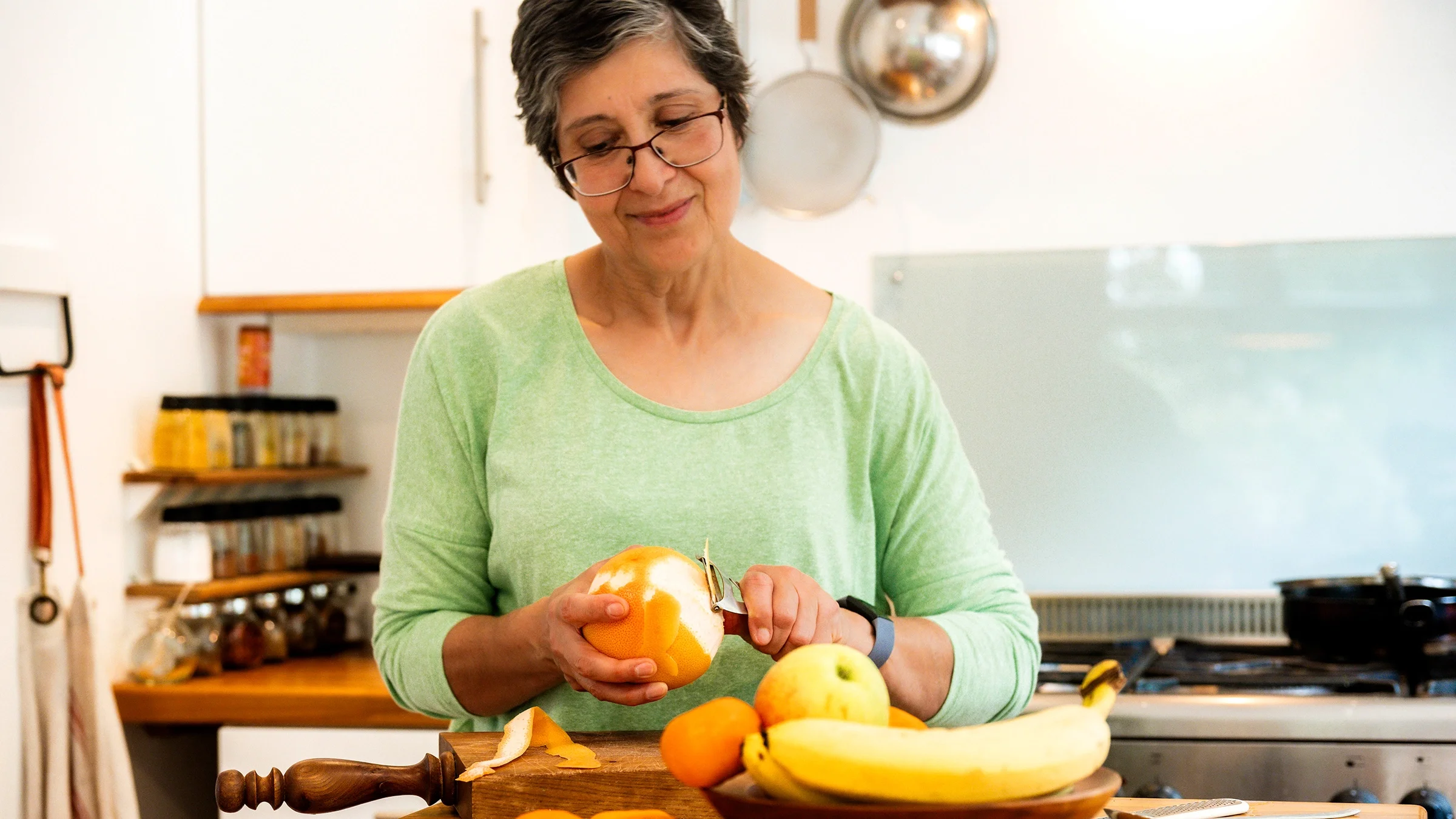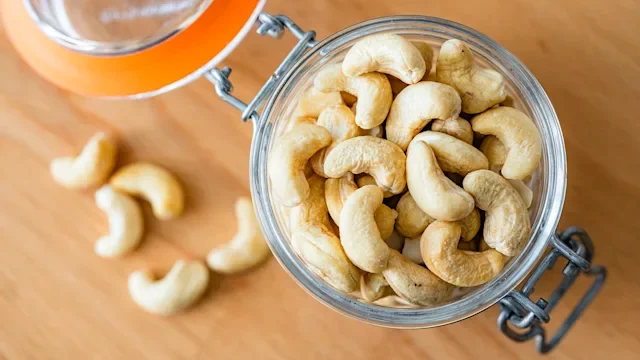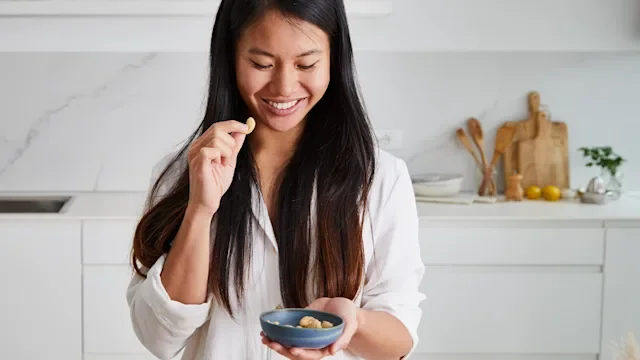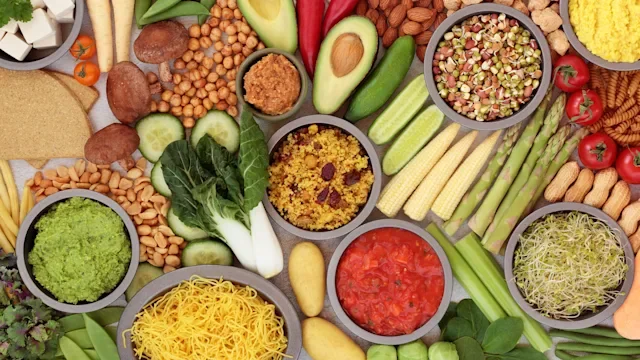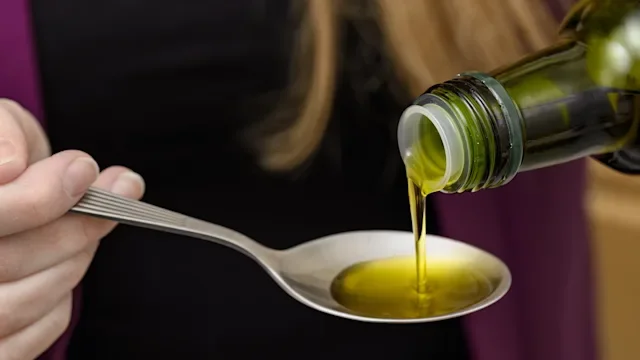Key takeaways:
Up to 40% of all food in the U.S. is wasted. Because of its short and variable shelf life, fruit is often tossed in the trash before it’s eaten.
Certain fruits can actually last weeks or months in your fridge. Long-lasting fruits include apples, blueberries, citrus fruits, dates, figs, and pomegranate.
There are some easy changes you can make to increase your fruits’ shelf life, like separating fruits from one another, putting them in the fridge or freezer, and purchasing freeze-dried versions.
There’s not much that beats the flavor of fresh, juicy, and sweet fruit in the summertime. It’s a huge disappointment when it spoils too quickly. Up to 40% of all food produced in the U.S. ends up wasted — and about 15% of food is wasted at the household level. Most of the food waste at home comes from tossing leftovers and produce that has gone bad.
The good news is that proper storage techniques and creative strategies to use up extra produce can help it last longer. In this article, we share the fruits that last the longest, and some tips on what to do if your produce is close to the end of its life.
Which fruits last the longest?
The longest lasting fruits include:
Apples
Blueberries
Citrus fruits
Dates
Figs
Pomegranate
Why do some fruits last longer than others? It depends on their ripening process, which is driven by the fruit hormone ethylene. It reacts with certain proteins — otherwise known as enzymes — that cause fruit to soften and change color. Each type of fruit has its own specific enzymes. The speed at which they ripen is determined by how these different enzymes react.
The chart below goes through the fruits listed above, and how long they last in the pantry and refrigerator.
Fruit | Nutrient contributions | Pantry or counter | Refrigerator |
Apples | 1 medium apple provides 17% the daily value for fiber and 14% of your vitamin C. | Up to 3 weeks | 4-6 weeks |
Blueberries | 1 cup of blueberries provides fiber (14%), vitamin C (15%), vitamin K (25%), and manganese (20%). | Store in the refrigerator | 1-2 weeks |
Citrus fruits | Oranges provide a whopping 85% of your daily vitamin C needs. | Up to 10 days on the counter | 10-21 days |
Dates (medjool) | 3 dates provide 14% of the daily value for fiber, 12% potassium, and 15% vitamin B6. | Up to 2 months | 12 months |
Figs | Fresh figs (4) provide 14% of your daily fiber needs. | Store in the refrigerator | Up to 2 weeks |
Pomegranate | 1 cup of arils provide a third of your day’s fiber and vitamin C, and 10% of your daily potassium needs. | Up to 5 days on the counter | 1-3 months |
It’s important to note that there are two classes of fruit ripening. Some fruits (climacteric fruit) ripen once picked, such as:
Bananas
Peaches
Avocados
Mangos
And some fruits (nonclimacteric fruits) ripen on the tree and are picked at peak ripeness. These include:
Strawberries
Blueberries
Citrus fruits
Pineapples
Read more like this
Explore these related articles, suggested for readers like you.
Some of the nonclimacteric fruits have shorter life spans because they were picked so close to being ripe.
If you can’t eat your fresh produce fast enough, there are other options:
Frozen fruit is often frozen at the peak of freshness, and retains most of the nutrients as fresh fruit.
Dried fruit often has some sugar added as the process to dry it requires sugar.
Freeze-dried fruit usually has no additives or extra sugar.
Canned fruits are an affordable option, and can last close to 18 months.
When possible, opt for fruit without added sugar or syrups. For example, just a half cup of fruit canned in heavy syrup contains nearly a third of your daily added sugar allotment. In some cases, canned fruit loses some of the fiber content when compared with the fresh fruit because the skin is removed before canning. However, any fruit is better than no fruit at all.
How long do fruits last in the fridge?
Some fruits can last longer in your refrigerator because cooler temperatures in the fridge slow down the ripening enzymes. If it tends to be humid and sunny in your house, the fridge can also help to create a dark environment with lower moisture. But each fruit’s longevity in the fridge is different. For example:
Strawberries and raspberries can last for about 3 days.
Cantaloupe is good for between 5 and 15 days.
Citrus fruits like grapefruits and oranges do well for several weeks.
Apples can last 1 to 2 months.
For some fruits — like watermelon, pears, avocados, and peaches — it’s best to let them ripen on the counter. But you can place them in the fridge when they’re close to their peak ripeness to add a few days. Once ripe, these fruits can last an additional 5 days in the fridge.
Tips to store fruit so that it lasts longer
Meghan Daw Sedivy, RD, LDN, Fresh Thyme Market’s health and wellness strategy manager, told GoodRx: “Most fruits and veggies can last in your fridge or pantry for a week or longer. But they need to be stored properly in order to get the most out of your produce shelf life.”
Here are some tips on how to store your produce.
Keep it away from other produce
All living things have naturally occuring hormones, and fruits are no different. The hormones in fruits interact with each other on your counter. This can cause the fruit to ripen quicker than if they were alone.
Put it in the refrigerator
The refrigerator can add a few days (and in some cases weeks) to a fruit's shelf life. For example, passionfruit or mango can last almost twice as long if refrigerated from the time of purchase. However, fruits like bananas are a little different. Their skin will begin to brown in the cold (but not the fruit!).
Cut it up, bag it, and freeze it
Freezing produce stops ripening and maintains nutritional value. Some produce can last between 8 months and 1 year in the freezer. Be sure to label and date any produce you add to your freezer to make it easier to know in what order to use them.
Get it freeze-dried or dried
Freeze-dried fruit provides a crunchy snack while on-the-go — and you don’t have to worry about shelf life. Look for freeze-dried apples, mangos, and strawberries at your local retailer. Dried fruits can last in your pantry for 6 months if unopened and up to 1 month after opening.
Toss produce with bruises, mold, or damaged spots
Fruits that have bruises or mold can cause other fruits close by to ripen even faster. It’s a good idea to check your strawberries and toss out any that are moldy. This can help the others stay fresh for longer.
Store it somewhere that’s easy to reach and the fruit will actually get eaten
Adults should be getting about two whole cups of fruit daily. If you’re finding that your produce is going to waste, consider where you’re keeping it. You can put out a bowl of cut-up fresh fruit for you or your family to snack on while moving about the house. Fruit is also a great snack when on the go. Oranges and apples travel well. It’s best to keep your fruit whole until you’re within a day of eating it. This is because slicing it speeds up its shelf life.
Ways to use fruit when it’s about to go bad
Not only is overripe fruit a bummer for your food budget, it can also become a food safety issue. The natural sugars produced from starch breakdown can promote bacterial growth. Spoilage can occur if fruit is allowed to ripen for too long.
The good news is you’ll be able to tell by the taste, smell, or visible mold growth if a fruit has gone bad. When in doubt, throw it out. Below are some kitchen hacks for using up your produce.
Put it on top of oatmeal or baked french toast
Once fruit is close to being overripe, it softens and loses volume. Eating it fresh may not seem as appealing, but adding it to cooked dishes like oatmeal or french toast is a good way to save it.
Make all fruit sauce
One of our own GoodRx Health’s medical editors Katie Golden, MD, makes her own purees with ripe fruit that’s about to go bad. “Basically, it is like making applesauce with different fruits (apples, pears, bananas, strawberries),” she said. Dr. Golden boils the fruit in a little water, lets it cool, and then transfers it to a food processor. She then adds lemon juice, vanilla, and cinnamon. You can then store it in the fridge, and use it for several more days. Similar to preserves or jam, it makes a great addition to yogurt, cottage cheese, oatmeal, or toast.
Use it in baked goods
Old bananas are always a good reason to make banana bread. Sedivy has another idea on how to use bananas for a nutritious breakfast: “I often use my overly ripe bananas to make mini protein banana muffin bites for a quick breakfast or midday snack.”
To make protein banana muffins, combine mashed bananas, eggs, oatmeal, vanilla, protein powder of your choice, and honey. Then bake in the oven as you would a muffin.
The bottom line
Fruit can be expensive, so wasting it never feels good. Next time you are at the grocery store, opt for some of the fruits that last longer in the refrigerator. Frozen, canned, and freeze-dried fruits are great options that last much longer. Storing them properly can help them last longer, as well. Incorporating ripening produce into baked oatmeal, sauces, or muffins can help use up extra produce at the end of the week.

Why trust our experts?



References
Capino, A., et al. (2024). Ethylene and the regulation of fruit ripening. University of Maryland Extension.
California Figs. (n.d.). Resources: Nutrition professionals.
FoodData Central. (2019). Apples, raw, with skin (includes foods for USDA’s food distribution program). U.S. Department of Agriculture.
FoodData Central. (2019). Dates, medjool. U.S. Department of Agriculture.
FoodData Central. (2019). Oranges, raw, all commercial varieties. U.S. Department of Agriculture.
FoodData Central. (2019). Pomegranates, raw. U.S. Department of Agriculture.
FoodData Central. (2023). Fruit cocktail in heavy syrup, fruit in heavy syrup. U.S. Department of Agriculture.
FoodSafety.gov. (2019). FoodKeeper app.
Moirangthem, K., et al. (2018). How do fruits ripen? Frontiers for Young Minds.
MyPlate. (n.d.). Fruits. U.S. Department of Agriculture.
Szymkowiak, A., et al. (2022). Household food waste: The meaning of product’s attributes and food-related lifestyle. Frontiers in Environmental Science.
U.S. Department of Agriculture. (n.d.). Food waste FAQs.
U.S. Highbush Blueberry Council. (n.d.). Grab a boost of blue.
Zhu, X., et al. (2023). Editorial: Towards a better understanding of fruit ripening: Crosstalk of hormones in the regulation of fruit ripening. Frontiers in Plant Science.

